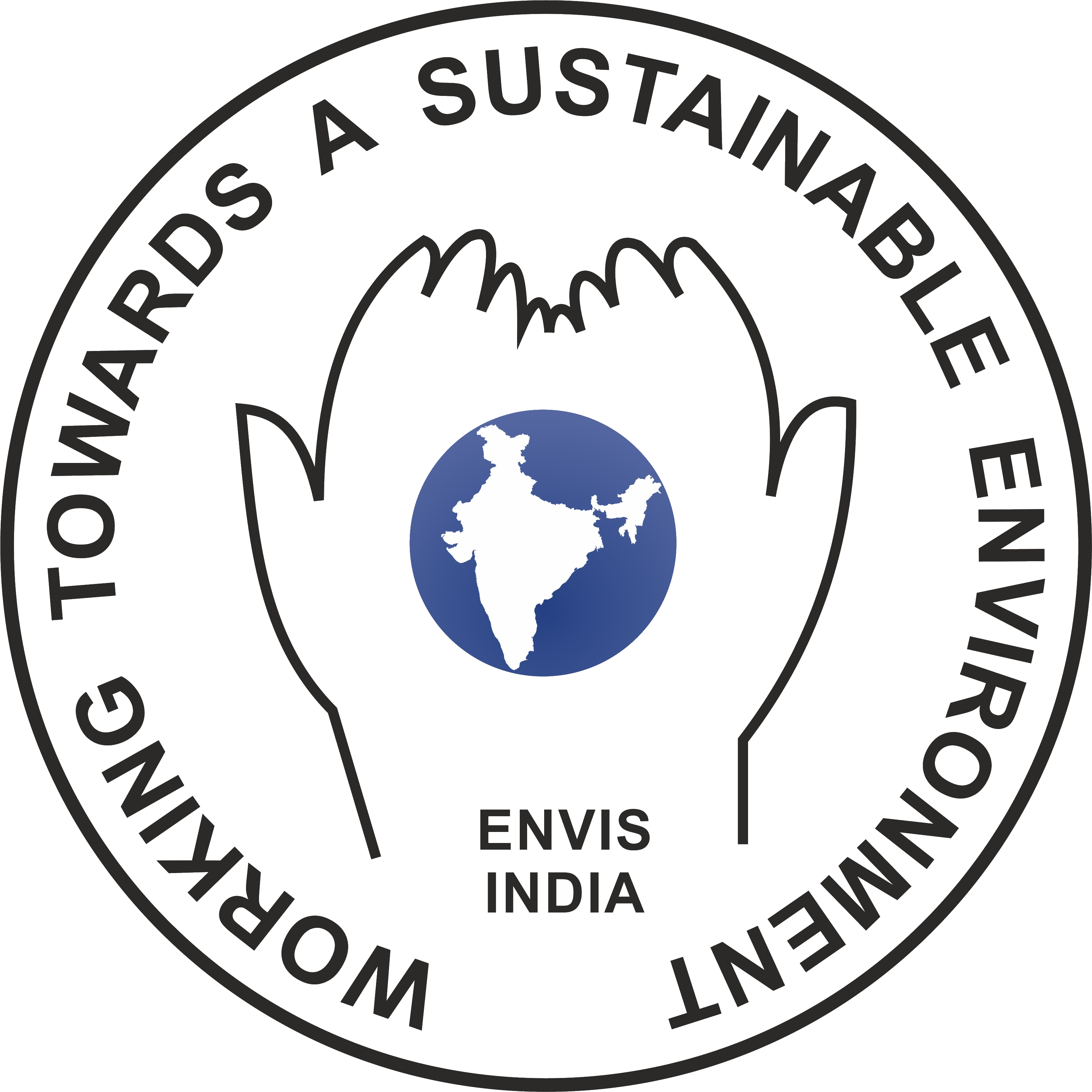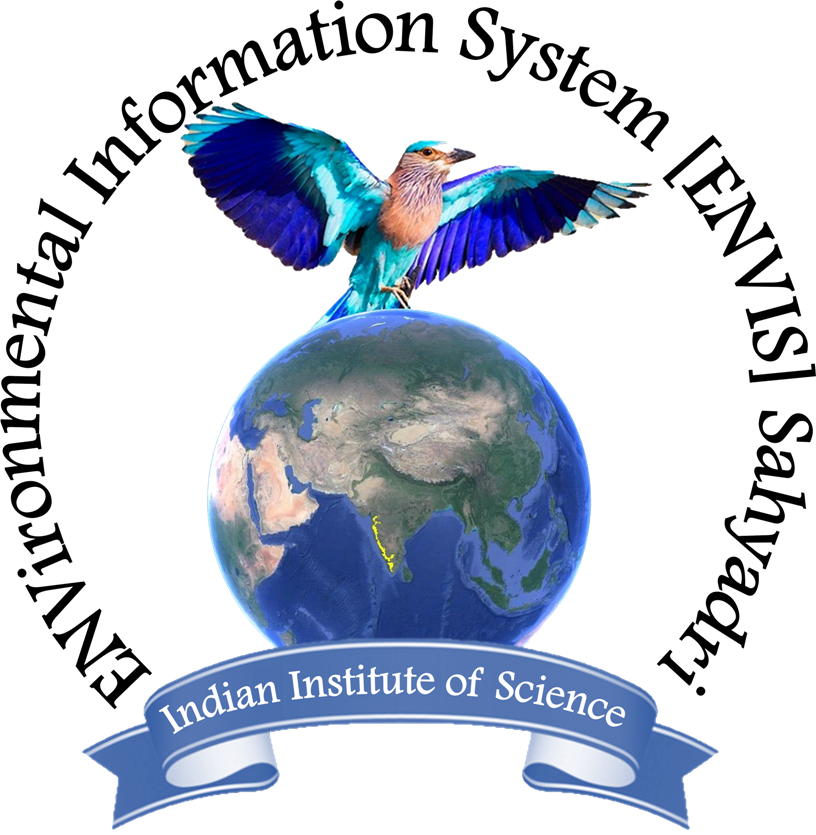Integrated Wetlands Ecosystem at Jakkur Lake, Bangalore: Optimal Wastewater TreatmentCite
Ramachandra T.V., Durga Madhab Mahapatra, Sudarshan P. Bhat, Asulabha K.S., Sincy Varghese, Bharath H. Aithal
ENVIS[RP], Environmental Information System, Energy and Wetlands
Research Group,
Centre for Ecological Sciences, Indian Institute of Science -
560012
envis.ces@iisc.ac.in
tvr@iisc.ac.in Phone:
080 22933099/22933503
1.0 Introduction
Wetlands include a wide range of aquatic habitats such as marsh, fen, peat land/open water, flowing water (rivers and streams) or static (lakes and ponds). These ecosystems being the transition zone between land and water are ecologically important in relation to stability and biodiversity of a region and also in terms of energy and material flow. These ecosystems perform a vital function of uptake of nutrients and bioremediation of heavy metals, volatile organics and other xenobiotic compounds and are aptly referred as "Kidneys of the landscape". They also aid in recharge of groundwater aquifers and stabilization of shorelines. These transitional zones or ecotonal region are repository of rich biodiversity and support food chain. Wetlands act as giant sponges, which helps in slowing runoff, lower flood heights, reduce shoreline and stream bank erosion. The functional ability of wetlands is dependent on the type of trophic structure and material exchange. The trophic structure includes various trophic levels as producers (algae, etc.), primary consumers (zooplanktons and grazers), secondary consumers (small fish), tertiary (large fish, birds, etc.). Algae being the primary producers synthesize carbohydrates during photosynthesis and give out oxygen along with the production of other essential metabolites. Bulk of the CO2 gets sequestered into algal biomass in these wetlands systems that aids in combating global warming through reductions of GHG (Greenhouse gases) in the environment. However the stability of every system depends upon the balance between production and consumption of energy and matter at different trophic levels in any system. The functional aspects of wetlands are tied to the tradeoff between the ecosystem function and the anthropogenic impact that makes it very sensitive and delicate. Human impacts include altering the catchment (changes in land cover), encroachment, solid waste disposal in lake beds, sustained inflow of untreated sewage from urban localities, etc. (Ramachandra, 2002, 2009a, 2010; Ramachandra et al., 2003)
Increased and unprecedented population growth has resulted in enormous stress on potable water from a daily consumption point of view and also in regards to increased wastewater generated by the city. Bangalore had flourished during 19th and early 20th century owing to a salubrious microclimate and abundance of water in the city of lakes. Globalisation, liberalization, privatization are the agents fuelling urbanization in most parts of India during early 1990's. Unplanned growth has led to radical land use conversion of forests, surface water bodies, etc. with the irretrievable loss of land prospects (Ramachandra et al., 2013a). Land use analyses show 584% growth in built-up area during the last four decades with the decline of vegetation by 66% and water bodies by 74%. Analyses of the temporal data reveals an increase in urban built up area of 342.83% (during 1973 to 1992), 129.56% (during 1992 to 1999), 106.7% (1999 to 2002), 114.51% (2002 to 2006) and 126.19% from 2006 to 2010 (Ramachandra et al., 2012a).
Rapid urbanisation in recent times has led to the large scale generation of wastewater. Untreated or partially treated wastewaters are fed to surface water that finds its way into ground water sources. The sustained inflow of untreated or partially treated sewage to wetlands leads to the enrichment of nutrients such as nitrogen (N) and phosphorus (P), evident from the algae bloom and profuse growth of macrophytes. This has lead to the contamination of existing water resources with pathogens and nutrients resulting in algal bloom due to eutrophic status of surface water. This has also contaminated nearby groundwater sources affecting the human health. Nitrogen as nitrate-N pollution leads to physiological disorders including blue baby syndrome (methemoglobinemia) and the persistent assimilation of nitrate rich water leads to carcinogenic symptoms (as nitrates get reduced in the body forming nitrosamines, which are carcinogens). Macrophytes grow profusely in these nutrient rich environment and progressively cover the entire surface of the water body hindering the passage of sunlight and diffusion of gases to the underlying water layers. Absence of sunlight affects trophic levels with the reduced algae and photosynthetic O2 generation depleting the dissolved oxygen concentration and thence affects the local biota.
Wetlands are the regional ecological barometers reflecting the health of a region due to the ecosystem services such as regulating the regional micro-climate (Benjamin et al. 1996; Ramachandra and Kumar 2010), recharging groundwater aquifers, thereby influencing the life of the people adjacent to it. There were 203 wetlands spread over an area of 2003 ha in 1973, that number declined to 93 (both small and medium size) with an area of 918 ha in the Greater Bangalore region in 2007 (Ramachandra and Kumar, 2008; 2010). Urban water bodies are prone to increased anthropogenic stress in recent times due to dumping of solid waste, encroachment of wetlands, sustained inflow of domestic sewage and industrial effluents leading to poor water quality. Untreated or partially treated wastewater has resulted in the enrichment of nutrients, leading to eutrophication with a very frequent algal blooms and rapid macrophyte growth with periodic successions (Mahapatra et.al, 2011). Influx of partially treated and untreated sewage has resulted in overgrowth, ageing, and subsequent decay of macrophytes creating anoxic conditions and devouring the system from life giving oxygen. This has impacted the food chain and hence the ecological integrity of the system.
Bangalore city is located on two ridges (North-Northeast and South-Southwest) with three watersheds (Hebbal-Nagavara, Koramangala-Bellandur, Vrishabhavathi). Northern and eastern parts of the city are with gentle slopes, while southern and western parts are very rugged Undulating terrain of the region has helped in the creation of interconnected water-bodies to meet the domestic and irrigation requirements during the pre-colonial period. These interconnected drainage system is supposed to transfer the storm water from one water-body to another, started receiving sewage with rapid population growth and lack of appropriate sewage treatment systems. Population in Bangalore has increased from 5.6 millions (2001) to 9.5 millions (2011). Population increase has led to large quantum of sewage influx into wetlands leading to contamination of wetlands and associated groundwater systems.
Collapse of land regulation is evident during the past two decades due to large scale unauthorized occupation of open spaces (wetlands, grasslands, parks) by the influential section of the society in collusion with the bureaucracy. Large scale land conversion of common lands to built-up in recent times further substantiates the nexus (Ramachandra et al., 2007, Ramachandra and Sudhira, 2007). Changes in the land cover have altered the regional hydrology evident from frequent floods, conversion of perennial wetlands to seasonal wetlands and decline of groundwater table. However authorities have kept some wetlands alive by diversion of sewage, which flows consistently and maintains the water levels in the system of interconnected lakes.
1.1 Water supply in Bangalore: Water is being pumped from Cauvery River ~100 km from the city with an electricity requirement of 75-100 MW. Bangalore is located at higher elevation (900 m above mean sea level) and Cauvery river courses are at 500 m above mean sea level. This exercise suffices the need for approximately 55 % of Bangalore city dwellers, while the rest are dependent on ground water and unauthorized drinking water supplies. Arkavathy River, with two reservoirs at Hesaraghatta (built in 1894, now dry) and Tippagondanahalli (built in 1933) insignificantly and irregularly contribute to a small fraction of the demand (30 MLD). The Chamrajasagar reservoir at Thippagondanahalli (or TG Halli reservoir), located at the confluence of the Arkavathy and Kumudavathy rivers, receives inflow mostly from the Kumudavathy but with a low flow rate (Sharachchandra Lele et. al, 2013, Ramachandra and Solanki, 2007). Water demand in Bangalore is roughly about 150 liters per day (lpd) per person and the total water requirement for domestic purposes is about 1,400 million liters per day (MLD). Water available from Cauvery (Stages I to IV, Phase I) and Arkavathy (Hesarghatta and Tippagondanahalli reservoirs) rivers is about 975 MLD. The loss of water during transportation and distribution is assumed to be ~30%. Significant portion is met from groundwater sources as indicated in Table 1 and Figure 1.
Table 1: Zone-wise piped water and ground water supply
Zone |
Surface water |
Groundwater |
Total |
Central |
67.1 |
38.91 |
106.01 |
North |
210.46 |
87.08 |
297.54 |
West |
184.89 |
149.45 |
334.34 |
East |
169.19 |
50.46 |
219.65 |
South |
133.106 |
176.00 |
309.11 |
Southeast |
104.79 |
67.80 |
172.59 |
Total |
869.536 |
569.7 |
1439.24 |

Figure 1: Water usage in Bangalore (piped water supply and from groundwater sources)
Due to insufficient water from Cuavery River, most of the new city municipal councils and town municipal council (merged with Bangalore city, in the formation of BBMP) are dependent on groundwater sources. A rapid increase in the number of borewells in Bangalore, was observed over the last three decades from 5,000 to around 4.08 lakh. It is estimated that 40% of population of Bengaluru are dependent on 750 MLD of ground water, which is extracted every day. According to the CGWB (Central Ground Water Board), between 2001 and 2007, the water level in Bengaluru has declined by 7 meters (m) at the rate of about 1m per year. Over exploitation of groundwater coupled with minimal recharge due to changes in land over (increase in paved surface with the loss of vegetation and water-bodies) has led to decline in groundwater table (as high as 500 to 600 m), evident from the prevalence of gray, dark and over-exploited groundwater blocks in the major part of Bangalore.
Communities have been dependent on wetlands for food, domestic, agricultural and industrial requirements. The economic benefits from wetlands to the society are in the form of water supply, commercial fisheries, agriculture, energy resource, wildlife resource, recreation, tourism, cultural heritage, biodiversity, etc. (Ramachandra et al., 2011). The myriad ways, in which wetlands are used, along with the numerous anthropocentric activities, have stressed wetlands in diverse ways. This has altered the wetlands quality disrupting its natural functions. Anthropogenic activities include direct physical destruction (drained for agricultural and developmental activities), siltation (soil erosion and removal of vegetative cover) and pollution from both point sources (municipal sewage and industrial effluents) and non-point sources (urban and agricultural runoffs) within the watershed (Kiran and Ramachandra, 1999, Ramachandra and Rajinikanth, 2003).
Treatment and disposal of wastewater generated in the neighbourhood constitute key environmental challenges faced in urban localities due to burgeoning population in the recent decade. Nutrient laden wastewater generated in municipalities is either untreated or partially treated and is directly fed into the nearby water bodies regularly, resulting in nutrient enrichment resulting in algal blooms. Conventional wastewater treatment options are energy and capital intensive apart from their inability to remove nutrient completely. In this backdrop, algal processes are beneficial and remove nutrients with carbon sequestration and resultant biomass production. Algae grows rapidly and uptakes nutrients (C, N and P) available in the wastewater (Ramachandra et al., 2013a; Mahapatra et al., 2013) and hence are useful in nutrient remediation. Treatment of sewage and letting into wetlands would help in further treatment (removal of N, P and heavy metals). This also prevents contamination of groundwater resources. Thus wetlands provide a cost effective option to handle sewage generated in the community and also helps in addressing the water crisis in the region.
Microalgae and native macrophytes of the wetlands help in the treatment due to abilities to uptake nutrients and heavy metals. Techniques have been developed for exploiting the algae's fast growth and nutrient removal capacity (Karin Larsdotter, 2006). The nutrient removal is basically an effect of assimilation of nutrients as the algae grow. Also, nutrient stripping happens the due to high pH induced by the algae as in ammonia volatilization, phosphorus precipitation, etc.


 Sahyadri ENews Issues: I - LXXVIII
Sahyadri ENews Issues: I - LXXVIII
